The panther genet, also called the large-spotted genet or the rust-spotted genet, is a genet that is extensively dispersed in sub-Saharan Africa. Its scientific name is Genetta maculata. Since it is thought to be widespread, the IUCN Red List classifies it as least concerning.
According to animal specimens that once lived in the Tower of London Zoo, John Edward Gray initially identified the rust spot genet in 1830 under the name Vivera maculata. The following species and subspecies for specimens acquired in natural history museums were proposed by various taxonomists between the 19th and 20th centuries. Formerly regarded as a subspecies, Genetta letabae (Thomas and Schwann, 1906) is now thought to be a distinct species.
Rusty-Spotted Genet: Species Profile
COMMON NAME: Rusty-Spotted Genet
SWAHILI NAME: Kanu Madoa-kutu
SCIENTIFIC NAME: Genetta maculata
TYPE: Mammal
FOOD: Rusty-spotted genets are carnivorous, primarily feeding on small vertebrates such as rodents, birds, reptiles, and insects. They may also consume fruits and other plant matter on occasion.
HABITAT: Rusty-spotted genets are found in various habitats including forests, woodlands, grasslands, and savannas. They are native to sub-Saharan Africa.
SIZE: Rusty-spotted genets have a body length of approximately 40 to 50 centimeters (16 to 20 inches), with a tail length of about 30 to 40 centimeters (12 to 16 inches). They weigh between 0.7 to 1.2 kilograms (1.5 to 2.6 pounds).
AVERAGE LIFE SPAN IN THE NATURAL HABITAT: In the wild, rusty-spotted genets have an average lifespan of around 8 to 12 years. However, some individuals may live longer under favorable conditions.
ACTIVE: Rusty-spotted genets are primarily nocturnal creatures, meaning they are most active during the night. They are agile climbers and skilled hunters, utilizing their sharp claws and keen senses to catch their prey.
GESTATION PERIOD: The gestation period for rusty-spotted genets is approximately 60 to 70 days. Females give birth to litters of 2 to 4 young, which are born in tree hollows or other sheltered areas.
WEIGHT: Rusty-spotted genets typically weigh between 0.7 to 1.2 kilograms (1.5 to 2.6 pounds), making them small-sized mammals. They have a slender body, long tail, and a pointed snout.
SIZE COMPARISON TO A 6-FT MAN: Rusty-spotted genets are smaller than a 6-ft man, with a body length of approximately 40 to 50 centimeters (16 to 20 inches). They are agile and adapted to their arboreal lifestyle, allowing them to move swiftly and silently through the trees.
Physical Characteristics:
The Rusty-Spotted Genet (Genetta maculata) is a small carnivorous mammal that belongs to the Viverridae family. It possesses distinctive physical characteristics that make it easily recognizable. Here is a description of the Rusty-Spotted Genet’s appearance:
- Size and Build: The Rusty-Spotted Genet is relatively small, measuring approximately 40 to 50 centimeters (16 to 20 inches) in length, excluding its tail. It has a slender body with short legs and a long, bushy tail, which adds to its graceful appearance.
- Coat Color and Pattern: The Rusty-Spotted Genet has a striking coat color and pattern. Its fur is covered with a rusty-brown or reddish-brown base color, with numerous small black spots or rosettes scattered across its body. These spots may coalesce into bands along the back and form stripes on the sides.
- Facial Features: The Rusty-Spotted Genet has a unique facial appearance. It has a rounded snout and large, round ears with a black border. The area around its eyes is white, and it often has dark markings around the eyes and on its cheeks.
- Limbs and Claws: The Rusty-Spotted Genet has well-developed limbs and sharp, retractable claws that enable it to climb trees with agility. Its legs are relatively short compared to its body, but they provide the genet with the necessary balance and coordination for moving through its arboreal habitat.
- Weight Variation: Adult Rusty-Spotted Genets typically weigh between 1.5 to 2 kilograms (3.3 to 4.4 pounds), although there may be slight variations in weight depending on factors such as age, sex, and food availability.
- Camouflaging Coat for Survival: The Rusty-Spotted Genet’s coat color and pattern provide effective camouflage within its natural habitat. The reddish-brown and black spots help it blend into the dappled sunlight and shadows of the forest floor and understory. This camouflage adaptation aids in predator avoidance and increases the genet’s chances of successfully ambushing prey.
The unique appearance of the Rusty-Spotted Genet showcases its adaptation to a life in the trees and its role as an agile predator. Its coloration and markings allow it to blend into its surroundings, while its physical features and sharp claws enable it to navigate through the vegetation with ease.
A. Compact and Delicate Build:
The rusty-spotted genet (Genetta maculata) is a petite and graceful carnivore. It possesses a slender body, covered in short and soft fur. The genet’s fur coloration varies, typically exhibiting a rusty or reddish-brown hue, adorned with dark spots or rosettes that provide excellent camouflage in the dappled light of the forest.
B. Adaptations for Climbing:
Equipped with sharp claws and semi-retractable claws, the rusty-spotted genet is an adept climber. Its agile and flexible body allows it to navigate through tree branches with remarkable ease and grace. The genet’s long, prehensile tail aids in balance and serves as a useful tool for stability during arboreal excursions.
Hunting Strategies and Diet:
The Rusty-Spotted Genet (Genetta maculata) exhibits a range of interesting behaviors that contribute to its survival and ecological role. Here are some notable aspects of the Rusty-Spotted Genet’s behavior:
- Arboreal Lifestyle: The Rusty-Spotted Genet is primarily arboreal, spending a significant amount of time in trees. Its well-developed limbs, sharp claws, and excellent climbing abilities make it an agile tree-dwelling species. This behavior allows the genet to access food sources, find shelter, and avoid ground-dwelling predators.
- Nocturnal Activity: The Rusty-Spotted Genet is primarily nocturnal, meaning it is most active during the night. This adaptation allows the genet to avoid daytime predators and take advantage of the darkness to hunt for prey. Its keen night vision and acute senses aid in locating food and navigating through its environment during nighttime activities.
- Solitary and Territorial: Rusty-Spotted Genets are generally solitary creatures, preferring to live and forage alone. They establish and defend territories, using scent markings to communicate their presence and warn potential intruders. Within their territories, genets have exclusive access to resources such as food and mating partners.
- Vocalizations: Rusty-Spotted Genets communicate with each other using a range of vocalizations. These vocal signals include calls, chatters, and growls, which play a role in territorial disputes and mate attraction. The genets may also use scent markings to reinforce their vocal communication.
- Diet and Hunting Techniques: The Rusty-Spotted Genet has a carnivorous diet, feeding on a variety of prey, including small mammals, birds, insects, and reptiles. It is an agile and skilled hunter, using its sharp claws and nimble movements to capture prey in the trees and on the forest floor. The genet’s camouflaging coat helps it remain hidden while stalking potential prey.
- Avoidance of Humans: Rusty-Spotted Genets are generally shy and elusive around humans. They are adept at staying hidden and are rarely seen in the presence of humans. Their nocturnal and solitary nature further contributes to their ability to avoid human interaction.
- Reproductive Behavior: Rusty-Spotted Genets reproduce through mating, and females give birth to litters of typically one to four young. The females provide maternal care to their offspring until they are independent enough to fend for themselves.
- Crepuscular Activity: While the Rusty-Spotted Genet is mainly nocturnal, it may also exhibit crepuscular activity, being active during dawn and dusk. This behavior allows the genet to take advantage of the transitional periods between day and night when there may be increased activity among potential prey species.
The behavior of the Rusty-Spotted Genet showcases its adaptations to an arboreal and nocturnal lifestyle. Its solitary and territorial nature, along with its excellent hunting abilities, contributes to its success as an agile predator in its natural habitat.
A. Nocturnal Stealth:
The rusty-spotted genet is primarily nocturnal, venturing out under the cover of darkness to search for prey. It possesses keen senses, including excellent night vision and acute hearing, which enable it to locate small mammals, birds, reptiles, and insects. With silent and stealthy movements, the genet stalks its unsuspecting prey before swiftly pouncing for a successful capture.
B. Versatile Diet:
As an opportunistic feeder, the rusty-spotted genet adapts its diet to the available food sources. It preys on a variety of small creatures, including rodents, shrews, birds, insects, and even fruits. This dietary flexibility allows the genet to sustain itself in different environments and adjust its feeding habits according to seasonal variations.
Habitat and Range:
The rusty-spotted genet is primarily found in the forests and woodlands of Sub-Saharan Africa. It inhabits a range of ecosystems, including tropical rainforests, savannas, and gallery forests. This adaptability to diverse habitats contributes to the genet’s survival and distribution across the continent.
Ecological Significance:
A. Seed Dispersal:
As the rusty-spotted genet consumes fruits as part of its diet, it plays a crucial role in seed dispersal. Through ingestion and subsequent excretion, the genet aids in the propagation of plant species, contributing to the regeneration and biodiversity of its habitat.
B. Predator-Prey Dynamics:
The genet’s presence in the ecosystem helps regulate populations of small mammals, birds, and insects. By controlling prey populations, the rusty-spotted genet contributes to maintaining a balance within the food web, ensuring the stability and health of the overall ecosystem.
Conservation Status and Threats:
A. Habitat Loss and Fragmentation:
Like many wildlife species, the rusty-spotted genet faces significant threats due to habitat loss and fragmentation caused by deforestation, agricultural expansion, and human encroachment. Destruction of its natural habitat limits the genet’s range and disrupts its ecological connections.
B. Illegal Wildlife Trade:
The Illegal wildlife trade poses another grave threat to the rusty-spotted genet. Unfortunately, its beautifully patterned fur is highly sought after in the exotic pet and fashion industries. This illegal trade not only impacts the genet’s population but also contributes to the overall decline of biodiversity and disrupts ecosystems.
Conservation Efforts:
A. Protected Areas and Habitat Conservation:
Efforts are underway to establish and expand protected areas within the rusty-spotted genet’s range. These protected areas provide a safe haven for the genet and other wildlife, safeguarding their habitats and enabling the natural ecosystems to thrive.
B. Anti-Poaching and Law Enforcement:
Enhanced anti-poaching measures, including increased patrols and stringent law enforcement, are crucial in curbing the illegal wildlife trade targeting the rusty-spotted genet. Collaboration between authorities, conservation organizations, and local communities is essential to effectively combat this illegal activity.
C. Community Engagement and Education:
Engaging local communities in conservation initiatives and providing education about the importance of protecting the rusty-spotted genet and its habitat is crucial for long-term conservation success. Encouraging sustainable livelihoods that promote coexistence with wildlife can help mitigate human-wildlife conflicts and foster a sense of stewardship among community members.
D. Research and Monitoring:
Continued research and monitoring efforts are necessary to gather essential data on the rusty-spotted genet’s population, behavior, and habitat requirements. This information can guide conservation strategies and aid in making informed decisions for the species’ protection.
Genetta maculata
The Genetta maculata (rusty-spotted genet), with its elusive nature and vital ecological contributions, stands as a symbol of Africa’s rich biodiversity. By recognizing its value and implementing robust conservation measures, we can ensure the survival of this remarkable species and protect the delicate balance of African ecosystems. Let us work together to secure a future where the rusty-spotted genet can roam freely in the forests, enchanting us with its beauty and serving as a testament to the resilience and wonder of the natural world.
Servaline genet Adaptations
The Rusty-Spotted Genet (Genetta maculata) possesses several remarkable adaptations that contribute to its survival and enable it to thrive in its habitat. These adaptations have evolved over time to meet the challenges it faces in its arboreal and nocturnal lifestyle. Here are some notable adaptations of the Rusty-Spotted Genet:
- Arboreal Adaptations: The Rusty-Spotted Genet has well-developed limbs and sharp, retractable claws that make it an agile climber. Its slender body and long, bushy tail aid in maintaining balance while navigating through trees. These adaptations allow the genet to move with ease among branches and access food sources, as well as find safe resting places in tree canopies.
- Nocturnal Behavior and Night Vision: The Rusty-Spotted Genet is primarily nocturnal, with behavioral and physiological adaptations that enable it to thrive during the night. It has excellent night vision, thanks to the structure of its eyes and a high concentration of rod cells. This adaptation allows the genet to detect movement and locate prey in low-light conditions.
- Camouflaging Coat: The Rusty-Spotted Genet’s coat color and pattern provide effective camouflage in its natural habitat. The reddish-brown fur with black spots and rosettes helps it blend into the dappled light and shadows of the forest floor and trees. This camouflaging adaptation aids in predator avoidance and increases its chances of ambushing prey successfully.
- Solitary and Territorial Behavior: Rusty-Spotted Genets are solitary creatures and establish exclusive territories that they defend from intruders. They use scent markings from specialized glands to communicate territorial boundaries and avoid conflicts. This adaptation ensures access to food resources and potential mates within their designated areas.
- Crepuscular Activity: While primarily nocturnal, the Rusty-Spotted Genet may also be active during the crepuscular periods, which are the transitions between day and night. This behavior allows the genet to take advantage of the increased activity of certain prey species during dawn and dusk.
- Sharp Claws for Hunting: The Rusty-Spotted Genet’s sharp, retractable claws are essential for capturing prey while climbing trees or moving on the ground. These claws provide an advantage in hunting small mammals, birds, insects, and reptiles, as they allow the genet to grasp and secure its prey effectively.
- Vocalizations and Communication: The genet communicates with conspecifics using a range of vocalizations, including calls, chatters, and growls. These vocal signals play a role in territorial disputes, mate attraction, and communication within its social context.
- Cautious and Elusive Nature: The Rusty-Spotted Genet is naturally shy and elusive, making it proficient at avoiding human interactions and potential threats. Its cautious behavior helps ensure its safety in the wild and minimizes disturbances to its natural habits.
These adaptations of the Rusty-Spotted Genet showcase its remarkable evolutionary specialization for an arboreal and nocturnal lifestyle. Each adaptation plays a crucial role in enhancing its survival, agility in capturing prey, and maintaining its ecological niche within its habitat.
Where to see Rusty-spotted genet in Tanzania
The Rusty-Spotted Genet (Genetta maculata) in Tanzania, can be found in various regions with suitable habitats. However, please keep in mind that spotting these elusive creatures can be challenging due to their nocturnal and shy nature. Here are some potential places where you might have a chance to encounter the Rusty-Spotted Genet in Tanzania:
- Arusha National Park: Arusha National Park, located near the town of Arusha, offers a diverse range of habitats, including forests and grasslands. The park’s montane forests provide suitable conditions for the Rusty-Spotted Genet. Participating in night game drives or guided walks with experienced rangers might increase your chances of spotting these elusive genets.
- Mount Kilimanjaro National Park: Mount Kilimanjaro National Park, encompassing Africa’s highest peak, is known for its diverse ecosystems. The park’s lower forested slopes could potentially be a habitat for the Rusty-Spotted Genet. Exploring these areas during night activities might offer opportunities to observe these shy creatures.
- Udzungwa Mountains National Park: Udzungwa Mountains National Park is characterized by lush rainforests and diverse wildlife. The dense vegetation of the park’s forests provides a suitable habitat for the Rusty-Spotted Genet. While visiting the park for its unique biodiversity, engaging in night safaris or guided walks could yield sightings of these elusive genets.
- Selous Game Reserve: The Selous Game Reserve, one of the largest protected areas in Africa, includes diverse landscapes such as woodlands and savannahs. The reserve’s riverine and forested areas might provide potential habitats for the Rusty-Spotted Genet. Night safaris or guided excursions could be rewarding for spotting this elusive species.
- Ruaha National Park: Ruaha National Park, known for its rugged landscapes and abundant wildlife, may also offer a chance to encounter the Rusty-Spotted Genet. The park’s varied ecosystems, including woodlands and riverbanks, could provide suitable habitats for these shy creatures. Night activities might present opportunities for sightings.
- Mahale Mountains National Park: Situated on the shores of Lake Tanganyika, Mahale Mountains National Park is known for its population of chimpanzees. The park’s lush forests and woodlands might be potential habitats for the Rusty-Spotted Genet. While primarily visiting for the chimpanzees, keeping an eye out during nocturnal activities might offer a chance to spot these elusive genets.
Please note that sightings of the Rusty-Spotted Genet can be rare due to their nocturnal and secretive behavior. Patience, persistence, and the assistance of experienced guides or rangers are essential for increasing your chances of observing them in their natural habitat. Additionally, always adhere to ethical wildlife viewing practices to ensure the well-being of the genets and their environment.
Servaline genet Safari Tips
If you’re planning a safari to spot the elusive Rusty-Spotted Genet (Genetta maculata) in Tanzania, here are some helpful tips to enhance your experience and increase your chances of observing these fascinating creatures in their natural habitat:
- Choose the Right Safari Destination: Select wildlife reserves or national parks in Tanzania known for their diverse habitats, including forests and woodlands, where the Rusty-Spotted Genet might be found. Parks like Arusha National Park, Mount Kilimanjaro National Park, Udzungwa Mountains National Park, Selous Game Reserve, Ruaha National Park, and Mahale Mountains National Park could offer potential habitats.
- Engage in Nocturnal Safaris or Guided Night Walks: Rusty-Spotted Genets are primarily nocturnal, so participating in night safaris or guided night walks can significantly improve your chances of spotting them. These activities are specifically designed to explore the nocturnal world and offer opportunities to observe these elusive genets during their active hours.
- Patience and Silence: Practice patience and maintain a quiet atmosphere during your safari. Rusty-Spotted Genets are shy and sensitive to noise. By minimizing disturbances and keeping noise levels low, you increase the chances of observing their natural behavior without causing them stress.
- Follow the Guidance of Experienced Guides: Experienced guides or rangers have valuable knowledge of the local wildlife, including the Rusty-Spotted Genet. Their expertise can help you locate potential areas where these genets are more likely to be found. Listen to their advice, follow their instructions, and ask questions to enhance your safari experience.
- Focus on Nocturnal and Forested Areas: Rusty-Spotted Genets prefer forested and woodland habitats, especially during the night. Concentrate your efforts in these areas during your safari. Pay attention to dense vegetation, tree canopies, and riverbanks, as these are potential habitats and foraging grounds for the genets.
- Use Nocturnal Equipment: Equip yourself with appropriate gear for nocturnal observations. This includes a flashlight or headlamp with a red filter to avoid disturbing the genets with bright light. Binoculars or a camera with low-light capabilities can also be beneficial for observing and capturing moments during night safaris.
- Respect Wildlife and their Habitat: Always remember to respect the wildlife and their natural habitat. Maintain a safe distance and avoid interfering with their behavior. Follow ethical guidelines and adhere to park regulations to ensure the well-being of the Rusty-Spotted Genets and the preservation of their environment.
- Appreciate the Whole Safari Experience: While the Rusty-Spotted Genet may be your primary interest, remember to appreciate the entirety of the safari experience. Tanzania is home to a diverse array of wildlife and stunning landscapes. Take time to immerse yourself in the beauty of the surroundings and appreciate the interconnectedness of the ecosystem.
By following these safari tips, you increase your chances of encountering the Rusty-Spotted Genet and enjoying a rewarding wildlife experience in Tanzania. Remember that observing these elusive creatures in their natural habitat is a privilege, and approaching wildlife with respect and mindfulness is essential for their well-being and conservation.
Rusty-Spotted Genet FAQs
1. What is a Rusty-Spotted Genet?
The Rusty-Spotted Genet (Genetta maculata) is a small carnivorous mammal native to various regions in Africa, including Tanzania. It belongs to the Viverridae family and is known for its distinctive coat color and pattern, featuring reddish-brown fur with black spots and rosettes.
2. Where can I find the Rusty-Spotted Genet in Tanzania?
The Rusty-Spotted Genet can potentially be found in various regions of Tanzania with suitable habitats. National parks and reserves like Arusha National Park, Mount Kilimanjaro National Park, Udzungwa Mountains National Park, Selous Game Reserve, Ruaha National Park, and Mahale Mountains National Park offer potential areas to spot this elusive species.
3. Is the Rusty-Spotted Genet nocturnal?
Yes, the Rusty-Spotted Genet is primarily nocturnal, meaning it is most active during the night. This adaptation allows it to avoid daytime predators and take advantage of the darkness to hunt for prey. Its keen night vision and agility aid in navigating through its environment during nighttime activities.
4. What does the Rusty-Spotted Genet eat?
The Rusty-Spotted Genet has a carnivorous diet, and its menu includes a variety of prey such as small mammals, birds, insects, and reptiles. It is an agile hunter, using its sharp claws and nimble movements to capture prey both on the ground and in trees.
5. How big is a Rusty-Spotted Genet?
Rusty-Spotted Genets are relatively small mammals, measuring approximately 40 to 50 centimeters (16 to 20 inches) in length, excluding their tails. They typically weigh between 1.5 to 2 kilograms (3.3 to 4.4 pounds).
6. Is the Rusty-Spotted Genet endangered?
As of my knowledge cutoff in September 2021, the Rusty-Spotted Genet is not classified as endangered. However, the conservation status may vary across its range. Like many wildlife species, habitat loss and human activities can pose threats to its populations.
7. Can the Rusty-Spotted Genet be kept as a pet?
The Rusty-Spotted Genet is a wild animal and is not suitable or legal to be kept as a pet in most regions. It has specific dietary, environmental, and behavioral needs that cannot be met in a domestic setting. Additionally, it is essential to respect its natural behavior and support conservation efforts aimed at protecting its wild populations.
8. How can I spot a Rusty-Spotted Genet in the wild?
Spotting the elusive Rusty-Spotted Genet in the wild can be challenging due to its shy and nocturnal behavior. Engaging in night safaris or guided walks with experienced rangers in suitable habitats is your best chance to encounter this fascinating creature.
9. Are Rusty-Spotted Genets dangerous to humans?
Rusty-Spotted Genets are not considered dangerous to humans. They are shy and elusive, and their natural behavior is to avoid contact with humans. However, it is essential to maintain a respectful distance and observe wildlife from a safe and responsible distance to minimize any potential risks or disturbances.
10. How can I contribute to the conservation of Rusty-Spotted Genets?
You can contribute to the conservation of Rusty-Spotted Genets by supporting organizations and initiatives focused on wildlife conservation in Tanzania and beyond. This can be done through donations, raising awareness about their ecological importance, and promoting sustainable practices that protect their habitats. Additionally, engaging in responsible tourism and adhering to ethical guidelines when visiting their habitats can help minimize disturbances and promote their conservation.

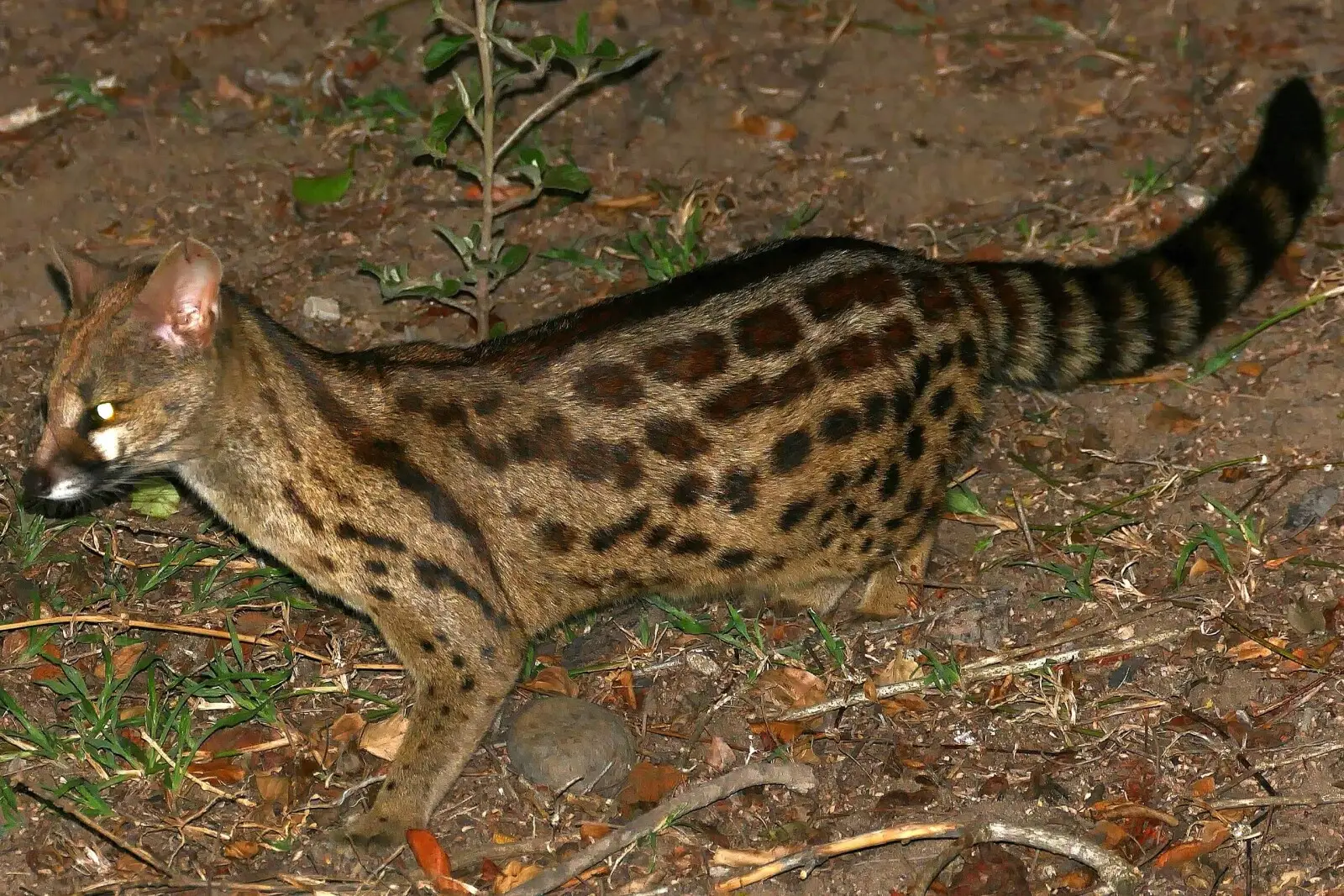
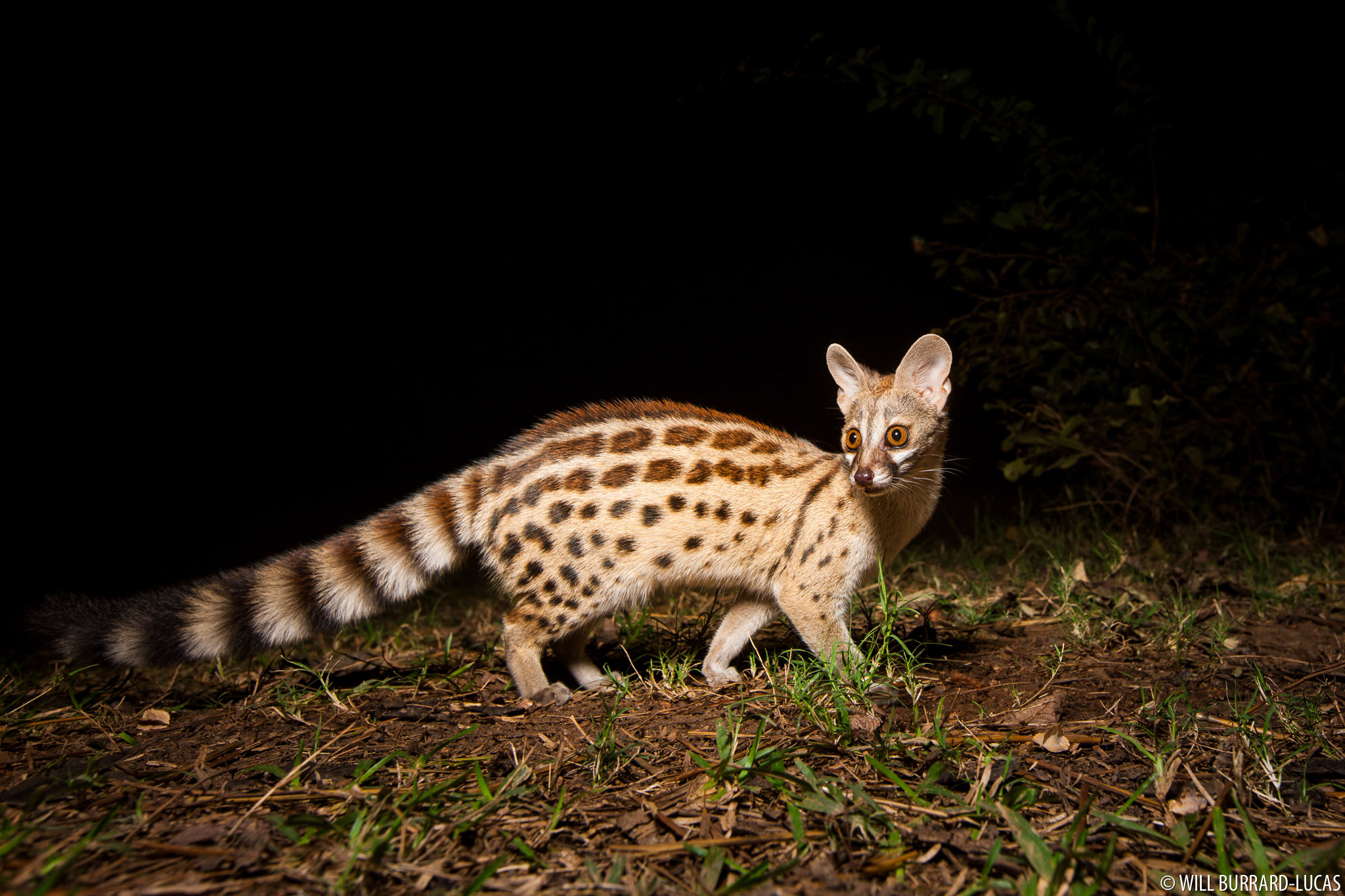
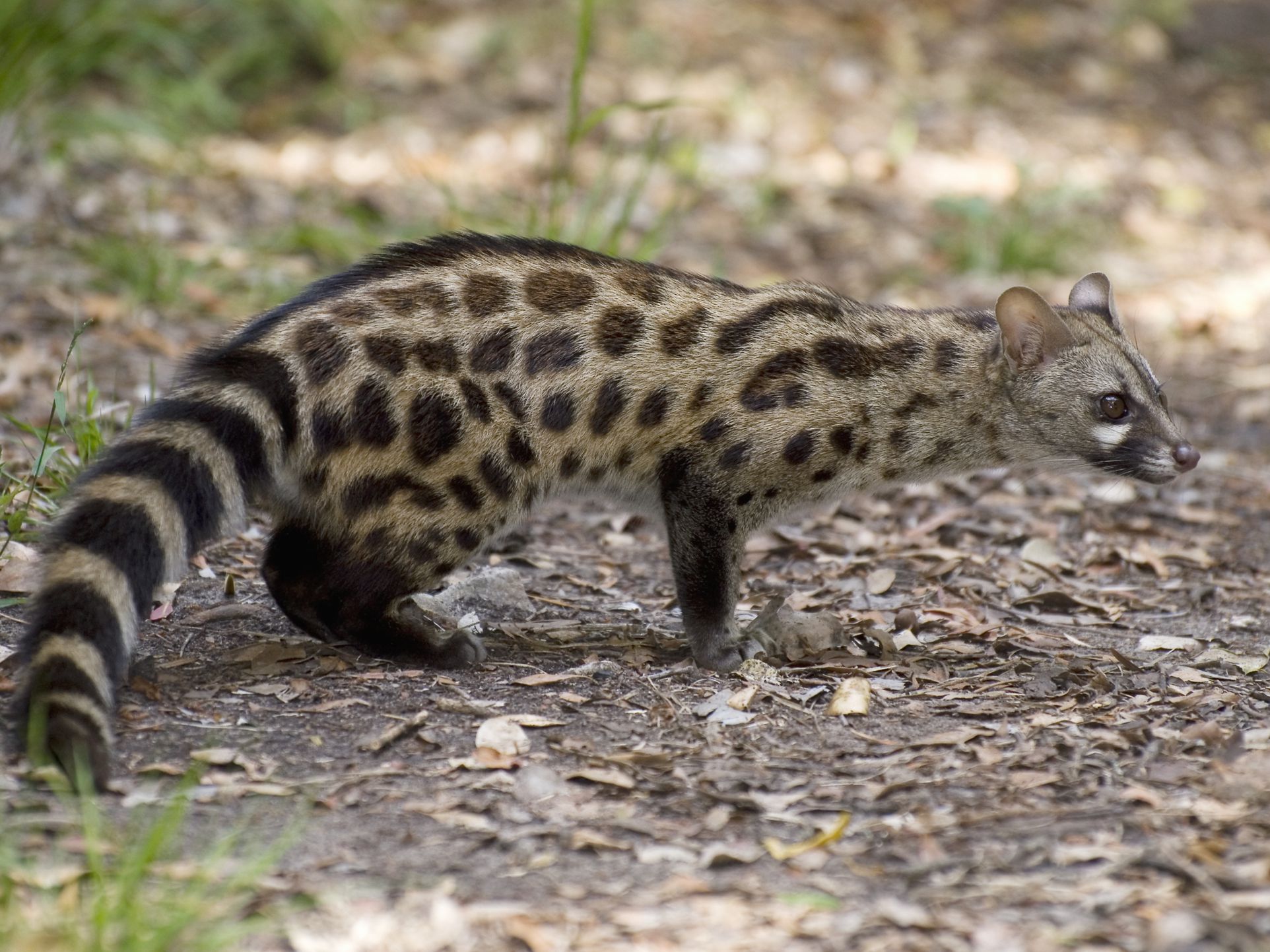
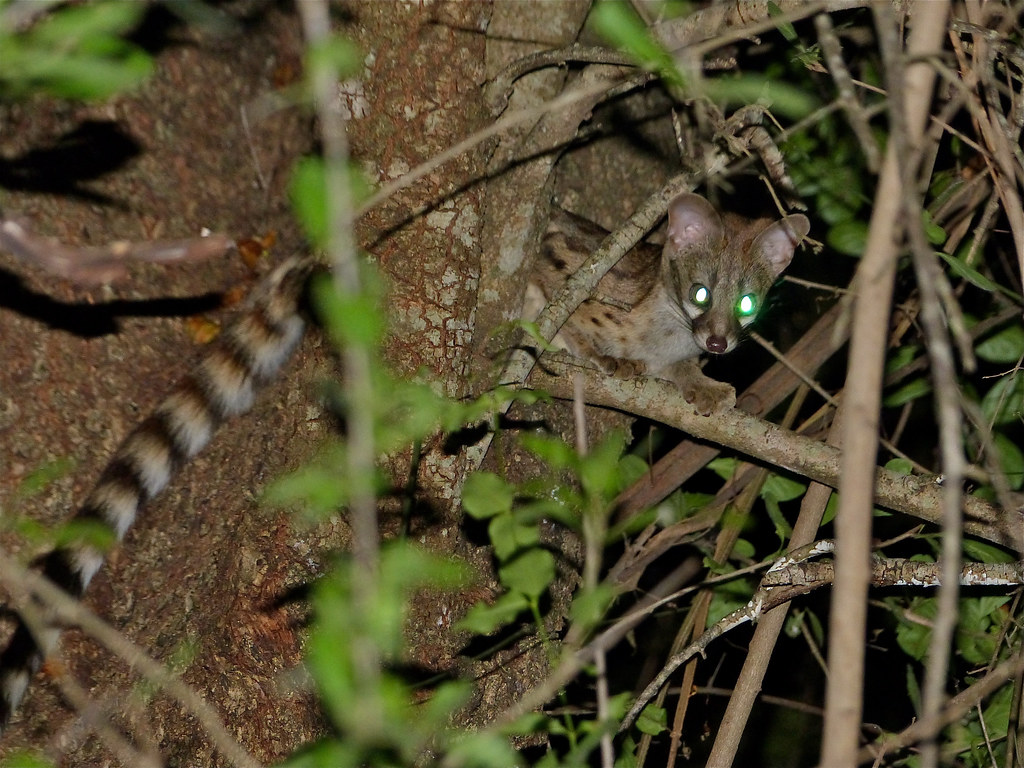

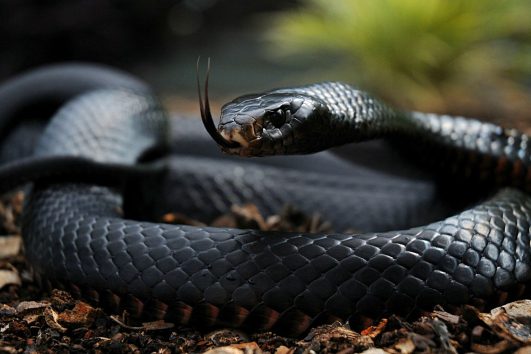
Tour Reviews
There are no reviews yet.
Leave a Review